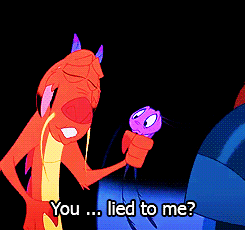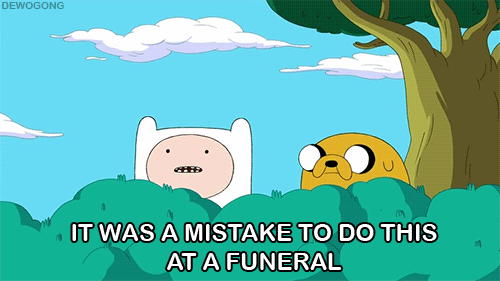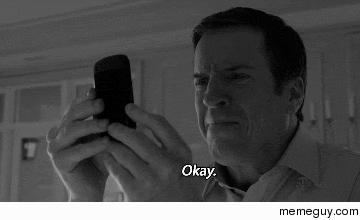Marketing is a journey that is both neverending and perpetually evolving.
We’ve gone from the so-called Mad Men era, heavily influenced by the consumer behavior revelations of Edward Bernays—the “Father of public relations” among other things, to the digital marketing movement of today, shaped by modern muses like Seth Godin—the “Father of permission marketing” and other digital pioneers.
We’ve gone through a vast array of strategies, both good and bad, that have taught marketers what works and what doesn’t.
And yet…
Some marketers, as a group of professionals, or rather as an industry, refuse to put to rest some of those tried-and-untrue tricks that consumers hated the first time...and will continue to hate every time.
It’s difficult, undoubtedly, and the pressure can be deafening. We’ve all heard the thunderous voice of the CEO demanding results, leads, sales, and everything else under the sun—those demands can certainly make these out-of-date tactics suddenly seem tempting. But let’s not succumb to that; we don’t need to go below our standards to accomplish these goals.
We can do better. We can listen harder and react more insightfully.
It’s time to move past the notion that marketing is just some trial-and-error game that uses the public as its test subjects, but rather, marketing is the art of convincing consumers that they want to engage with a brand because it just feels right to them in their gut.
What’s the first step to making marketing less annoying?
It’s time to cut the crap, people.
Some of these things worked at one point, but the world is different now. We’re different now.
Step 2? We shall move past these less-than-favorable tactics and make marketing awesome, real, engaging, and effective.
Let’s take a look at the top 6 things that marketers do that make consumers want to shut the virtual door in our faces, hoping to graze the tips of our noses when it slams as punishment for our “hackiness” (and yes, I mean to use that word in a bad way).
1: Being Pushy
The problem:
Assailing users with content everywhere and anywhere—especially of the purely promotional sort—is just overwhelming and can get annoying really quickly. Sending too many emails or posts that scream “me, me, me!” will just make consumers want to cover their ears and turn away.

The solution:
If you’re staying true to your brand strategy and promise, raising awareness organically, and focusing on quality over quantity, there’s no need to beg for unwilling attention. In fact, plastering your brand virtually everywhere that allows does not count as raising brand awareness; it’s likely to turn potential leads off of what you’re trying to achieve. Getting leads requires being in the right place at the right time for your prospects, not being everywhere all the time.
The problem:
I’m talking about the classic bait-and-switch email subject line that translates into, “this isn’t promotional, open it”—only to discover that it is indeed a sales pitch. The CAN-SPAM act exists because brands have tried to trick people into consuming their email content in the past. Think about it, though—would you rather have people open their email because they think they want to, only to be misled and frustrated, or because they know they want to, anticipating the value that is stated?
The same goes for clickbait in general. I mean, even the term “clickbait” sounds like consumers are literally being hunted through content.

The solution:
Make sure your subject line and emails in general are honest and authentic—you’re sure to gain more trust than otherwise.
When writing content, write a headline that creates intrigue, not to the extreme of total mystery, and deliver on whatever your reader expects to find on the other side of the link.
The problem:
Guilt-tripping CTAs are irritating, period.
No one wants to click a button that says, “no thanks, I don’t want to make money” or “I don’t care about seeing results.” It’s bad enough that people get bombarded with popups everywhere; making them feel guilty about closing out of one just adds to the frustration.

The solution:
If you don’t want to leave a bitter taste in the mouths of people viewing your popups, be kind and polite. A “no” is fine—not everyone is the right fit for your product or service anyway—so it’s best to part ways on a good note; that way, if the need for what you offer ever arises, you’re still in the running. Provide a clear, neutral or positive-toned exit button (like the classic “no thanks”) so that your offer isn’t hinging on the user’s guilt.
2. Contacting Without Permission
The problem:
Adding people to your email list without getting explicit permission or a signup process, cold-calling folks’ home phones who have never had contact with you before, and even hiding or otherwise obscuring the unsubscribe button in emails are all much more likely to upset your prospects than impress them. Not having an opt-in process for the people you contact is sure to dilute the number of qualified (and, more importantly, interested) leads in the batch, too.

The solution:
Seth Godin always preaches about how marketing is all about asking permission these days, and he’s right. The world is noisy, cluttered, and bursting full of brands trying to peddle their product or service. Just like you would ask real people on the street for permission before, say, getting them to take that super touristy photo of you next to the Statue of Liberty, you should do the same with virtual people before promoting your brand.
People value their privacy and autonomy to decide who to invite into their home, email server, or even social circles. In the case of marketing, it’s always better to ask permission than forgiveness—chances are, “I’m sorry for intruding. Anyway, would you like more information on our products?” would not go over very well if the person is already trying to chase you out of their bubble.
3. Being Aggressively “Salesy”
The problem:
Any brand that boasts, “we’re the best [business type] in the country/world/universe!” poses a challenge to its customers—is it the best? If not, which competitor is better? And more importantly, why don’t I go give that competitor my money instead of this brand?
Making unsubstantiated, subjective, or otherwise lofty claims is a dangerous strategy to adopt. On a similar note, the word “guarantee” is an added challenge to the consumer; it gives him the freedom to decide, subjectively, if the product or service is 100% satisfactory or if the brand is falsely guaranteeing something that cannot be granted.

The solution:
Anything that cannot be delivered should not be promised.
If your brand is amazing, let the positive reviews, awards, or other objective (or at least external) praise speak for itself. If reviews are not so good, then your brand has something to strive toward, but even in that case, pretending that things are better than they are will do more harm than good.
Also, writing in a normal, conversational tone without emphasizing words will avoid the dead giveaway of your copy being a sales pitch. People don’t want to be overtly sold to, so don’t give them the opportunity to immediately tune out just by scanning the text. Sure, sometimes all caps and bold is necessary for instances where it may otherwise get lost in a sea of text, but for the most part, save that for very rare, veeeery important cases.
The problem:
Taking words too far is obnoxious for users. Capitalizing or bolding power words is a dead giveaway that you’re trying to sell someone on the fact that you can GET YOURS TODAY for FREE—in fact, if you buy right now, we’ll send you a gift that has a $10000 DOLLAR VALUE! (See, isn’t that annoying to read?)
Even worse, there are certain buzzword phrases—perhaps including the word “buzzword” itself—that are overused, resulting in dilution of meaning and glazing of readers’ eyeballs.
Some phrases that are rapidly losing their fleeting luster are:
- “And that’s not all…”
- 100% guarantee
- Growth hacking—or any kind of hacking, for that matter
- Disruptive
- So-lo-mo (social, local, mobile)
- Snackable content

The solution:
Stay away from the mainstream lingo and find better, more unique ways to describe the value of your brand. Not only will it be like a refreshing breath of air for your prospects, but you’ll also likely stand out from the crowd by not calling your product, you know, disruptive and snackable...or something.
The problem:
When a consumer sets off a trigger that he’s interested in a brand by clicking into the website, browsing products, viewing an ad, or other indicating actions, the natural next step for a brand is to place targeted ads in that consumer’s browser, social media, and anywhere else to serve as a reminder to come back and purchase. That’s fine—maybe a bit much sometimes—but the real problem happens when a consumer completes a purchase and gets the same treatment. He’s already bought the product or service, and if it’s something not-so-disposable, like a new refrigerator, chances are that he’s not in the market for a second one for a very, very long time, and being further sold to will just create a sentiment of bitterness.

The solution:
Make sure your ads are set up to target the right people with the right actions and go in there to monitor what the software is doing every once in a while. Computers are smart, yes, but they do what we tell them to do, and don’t do what we don’t explicitly tell them to do, like leaving a new, happy customer alone. Make sure that your ads are focusing on consumers that are the most likely to buy so that you aren’t annoying those who don’t fall into the right criteria.
The problem:
Have you ever downloaded a brand’s app just to find out that they send you notifications that are essentially reminders to buy from them? I’m not even talking about getting an ad about the newest seasonal styles that are now available; I mean receiving a message that says something along the lines of, “did you know you can purchase through this app? Well, you should.” and nothing more. My thoughts are always, “great, tell me something I don’t know...” and other consumers’ likely are too.

The solution:
Notifying people to buy from you is like driving up to a forked road with a sign that reads, “you should turn left here because I said so.” Will you turn left? Probably not, because you know where you want to go, and even if you don’t, who’s this sign anyway to tell you what you can and can’t do?
If a consumer wants to make a purchase, she will. As a marketer, your job is to provide the reasoning as to why she should choose your brand over others, not to convince her to simply dish out money. Save the notifications for the real stuff.
4. Not being genuine in the process
The problem:
Automating social interactions of every kind can be a total disaster; unlike humans, robots lack the social skills to know when, where, and how to say what’s appropriate for the situation. When you have your “trusty” robot comment nonsense like, “this shot feels adorable!” on an Instagram photo of someone who was just checked into the ER, your brand just sounds insensitive, which is worse than not commenting at all.
On a similar note, direct messaging can be worse than not talking to your followers at all—if you’re automating everything, at least. Everyone these days can smell an automated DM on Twitter from a mile away, usually because it ends with “this message was sent from @appname.”
And finally, the pseudo-automated email...oh, boy. It seems, on the surface, that Rick from ABC Teapots is earnestly reaching out (with an email subject line of “hello, dear friend”) because you are so very special to that brand, but as soon as you open the email, you know you’ve been spoofed. The body of the email is a textbook example of promotional copy, and the person you thought was emailing you even has the gall to sign it “Warmly, Rick”—as if Rick himself put his heart and mind into writing directly to you. The true disaster happens when good ol’ “Rick” sends the exact same email to you every week for months, down to the subject line, copy, and all.

The solution:
Real people want to connect with the real people behind brands, not some fancy shmancy corporate identity. Digital marketing has made this genuine connection possible...but it takes a tad more work than it does to just automate everything and focus elsewhere. Still, that’s not why automation was created; it’s meant to supplement the still very real connection that brands cultivate with their followers, so use it accordingly.
Make sure that you monitor what your bots are saying if you must use them, disable any sort of “cold-DMing” messages that you think you should send, and certainly don’t mask a sales email as an old friend attempting to reconnect after some long years apart.
The problem:
Auto-posting identical updates across the board is like putting in half the effort of being social—you’re there, yes, but you’re also everywhere else in the exact same way. The audience on Twitter is very different from the one on Instagram, Facebook, and even LinkedIn. In fact, we just released an ebook that serves as a guide for interacting on different social channels if you need help deciphering the culture of each.
Not catering the message to unique audiences can create disconnect and even be perceived as lazy. Even worse, posting an Instagram photo to Twitter seems like you’d be killing two birds with one stone, but really, you’re killing your Twitter profile with poorly-displayed links to an image that’s only accessible on Instagram. If someone is interacting with your brand on Twitter, don’t send them on a wild goose chase to Instagram and back—chances are, they don’t want to click your link so they can stay where they are, and will simply ignore the post.
On a related note, posting content with grammatical errors is the marketing equivalent of posting “HBD” on a friend’s Facebook wall when it’s her birthday. You sort of tried...but not enough.

The solution:
When it comes to posting across channels, draft up a handful of caption variations, then adjust each to the culture of individual channels as needed. And hey, if your brand doesn’t get much engagement on one channel, you don’t have to be there. It’s easier and more sincere to be absent from a channel entirely than essentially to copy-paste posts from another.
Always proofread your copy before you publish. Always. I cannot stress that enough—as a content marketer myself, I immediately question the amount of effort that goes into anything as soon as I spot an error. Did you care? Are you bad at spelling and didn’t take the time to use spellcheck? Do you think I’m too dumb to notice?
Long story short: don’t let people question your content—revise before you post.
The problem:
Hopping on trends can backfire in a big way, both in a hashtagging and newsjacking situation. Don’t try to “hack” your way to getting noticed in a popular feed by tacking on a hashtag that’s irrelevant to the content or your brand strategy; it’s painfully clear what you’re trying to achieve and the information does not match what viewers seek.
In terms of newsjacking, it can be seen as really insensitive or even offensive if your brand tries to promote itself based on some big headline story that’s happening. Any brand that tried to increase sales by relating to the recent back-to-back hurricanes, I’m looking at you.

The solution:
If a hashtag relates to your brand or specific content, use it and connect with that community. If it doesn’t, search for the most popular relevant hashtag that’ll garner the right quality of attention that you’re looking for on that platform. It’s better to have engaged viewers than confused ones anyway.
As for newsjacking, there are very few cases, especially with upsetting news stories, where relating it to your brand is appropriate. However, when done right, it can give your brand a hefty boost into evanescent fame. If your brand is all about cybersecurity, then the recent Equifax data breach fiasco could be leveraged to promote how your brand can help protect its customers from exposing their valuable information online to thieves.
On the other hand, if that same brand were to catch wind of Hurricane Harvey and say something like, “Houston strong, just like our security tech,” that would be terribly apathetic and likely cause outrage, not sales.
The problem:
Though it may seem like an easy way to build intrigue, creating contests where, in actuality, everyone wins only to discover it’s a discount instead of a freebie, is a bad, bad move. If your brand is giving something away for free, actually give it away at $0.
People have become wary of cruise lines supposedly pulling their name from a hat and calling them to claim that the “free” prize will only cost them $500 (canceling out the “free” part, clearly).
Similarly, when a person receives a message that she exclusively won a prize, only to have her friend next to her receive the same message a minute later...no one wants to falsely feel special, only to have it stripped away.

The solution:
Host contests with real prizes, be honest about how many people will receive a prize, and please, for the love of marketing, call a discount what it is: a discount, not a freebie.
5. Failing to focus on UX
The problem:
I, like many people out there, use a handful of apps on my phone every day. I check certain websites nearly every day, too, and there’s nothing that’s less refreshing than seeing the same ad, with the same image, same copy, and same CTA...every. Single. Day.

The solution:
Though humans aren’t goldfish, as Seth Godin famously said to us a few months ago, we do like change and surprise in our routine. Creating variations of your ad campaign will garner more attention, avoid the dreaded tune-out that consumers have been conditioned to give less-than-impressive ads, and show that your brand is putting the customer’s experience with your brand first.
The problem:
No one likes to be bombarded with anything—unless you count puppies. Even then, some people are allergic and would be severely upset by such bombardment, but I digress. Pop-up ads, when used well, can be very effective for calling the user’s attention to content, a deal, or other information that is actionable and relevant to his needs.
On the other hand, getting attacked with pop-ups the moment you land on a website is disorienting and counterproductive: if the person isn’t familiar with your brand, how does he know if he wants to subscribe to your supposedly “awesome” newsletter yet or grab a discount for a product he may not buy?

The solution:
Taking into account the fact that a user needs to first orient himself on your site and get to know your brand a little better can be the difference between getting that prospect signed up for your newsletter down the line and simply causing a bounce and never seeing him again. Don’t disrupt the experience to the point of frustration; time your pop-ups so that they arise in the right points of that prospect’s journey.
The problem:
If you have content that’s intended to drive the user to complete an action, as all good marketing content should, you better have an action ready to be completed! Not providing a call to action (CTA) leaves the user thinking, “great. Now what?”
While we don’t want to make it apparent that we’re holding the user’s hand through their journey, we also don’t want to drop them in the middle of the desert and say, “whelp, you know where to go from here, right?”

The solution:
Providing related content, a contact button where appropriate, or a downloadable with more information are all next steps that the user needs to be made aware of if you’re going to turn a prospect into a customer.
Let’s take a step back, too, and consider how the random people online who interact with your brand also need incentive to do something with your content—want a share or a follow? It’s more likely to happen if you gift them content and follow up with the request, but the request is necessary for them to be more likely to take the action.
The problem:
Marketers loooove data. They eat, sleep, and even dream data.
However, people are not so eager to share everything with strangers, so collecting data is a modern challenge in and of itself. When you provide a free ebook offer, a 20-field form will leave a user debating if the content is worth the effort and trust.
Yes, it would be nice to know Bob’s company name, size, industry, biggest marketing challenge, and perhaps his decision-making power, but you’re lucky to grab even a single name and email from most people.

The solution:
Try to gauge the usefulness and magnitude of content and then make the form accordingly.
If you’re giving away a one-of-a-kind, completely comprehensive report on the state of marketing, you may be able to squeeze more information out of eager readers than if you’re giving away a quick cheat sheet.
The user will be happy that she doesn’t have to spend so much time and effort on a single-page PDF, and you’ll still get her name and email for internal purposes.
The problem:
“Would you like to allow push notifications for thiswebsitethatyou’veneverheardof.com?”
I’m willing to bet that something like this has happened to you—maybe not that exact URL, but still—and you’re probably lying to yourself if you say that you weren’t even the slightest bit irritated.
Notifications are something that people get every day, hour, even minute, from all sorts of places, which means that one more notification is, in fact, a big deal. Much like presenting a pop-up offer to the user immediately, asking to allow notifications upon visiting the site is a little pushy.

The solution:
Rather than prompting users to allow notifications the conventional way these days, give them the option to do so after cruising around and getting a feel for it first.
And while the easiest way to get people to subscribe to your blog page is with this weird, vaguely retro box that drops from the top of the page, you can at least customize the box to drop down at a later point than, say, immediately. Try adding a delay to give users a good experience in the right order of events.
6. Using “hacky” practices
The problem:
Promising instant results, guaranteed improvements, or anything “speedy and effective” that can’t naturally be achieved so quickly is setting your brand up for failure. There are so many factors in everything we do, especially with non-controllable factors like purchasing decisions, that nothing is truly concrete and foolproof.
Even worse, quick cures or “hacks” are usually a way of doing things quickly that can’t possibly be done quickly and well at the same time, inevitably sacrificing the latter.

The solution:
With some things, like growing an organic following on your blog, slow and steady wins the race. I don’t mean that you shouldn’t find ways to try to do things faster—the hare had some lessons for the tortoise indeed—but always prioritize quality and process. And if someone is selling your brand on a way that is much faster and more effective, do your due diligence before assuming it’ll be done well.
The problem:
Buying followers, email lists, and so on. Just don’t—if those people don’t already want to associate with you, why would being part of a transaction change anything?
And worse, how would you know if you’re buying real people’s loyalty or just a bunch of robots?

The solution:
Grow your following organically or through promotional content, because either way, the people who interact with you will be doing so because they want to.
Besides, social proof isn’t all it takes to be successful, so don’t fret about having fewer followers than a competitor, as it may turn out that your fans are more, well, human than theirs altogether.
The problem:
You can try to grow your audience by borrowing some from another account, but the tactic is plainly intentional and not guaranteed to work. When someone talks about getting “explosive growth” from an S4S (or share-for-share) campaign, it means that they’re obnoxiously sharing each other’s content on Instagram with a “follow @user follow @user follow @user for more amazing content” with the other account doing the same for them. It’s so obvious to followers that the result is purely promotional and less-than-genuine in spirit.

The solution:
If you’re going to piggyback off another account’s success, make it an official deal—partner on an event, do a thought-provoking series of posts together, or otherwise come up with a less-blatantly-promotional way of scratching each other’s backs. It’s possible; it just takes more imagination than a S4S does.
The problem:
And finally, never “spray and pray” with content. No one wants to get attacked with tons of posts from an account that are just OK at best.
Many times, too, the more mediocre content a brand blasts out, the more diluted their strategy becomes, and the more confused followers tend to become about what to expect from the brand.

The solution:
Stick to your content strategy, focus on quality over quantity, and deliver on the promise of providing your following with useful, engaging, and actionable content.
They know you’re there—they follow you, after all—so don’t make them regret letting you into their exclusive newsfeed.
Final Thoughts
Marketing is essential for every business ever, but there’s a right and wrong way to go about it.
We, as brands, should delight our customers and give them a good feeling about interacting with us, not leave them with a sour taste in their mouths by getting pushy and focusing on the sale.
Your customers are not just leads; they can be valuable brand advocates if you treat them well and focus on their needs over your profits.
Like I said at the top of this article, we can do better. We can listen harder and react more insightfully. We can be better marketers; we just have to try.

What are your pet peeves when it comes to marketing? Share your thoughts in the comments below!




